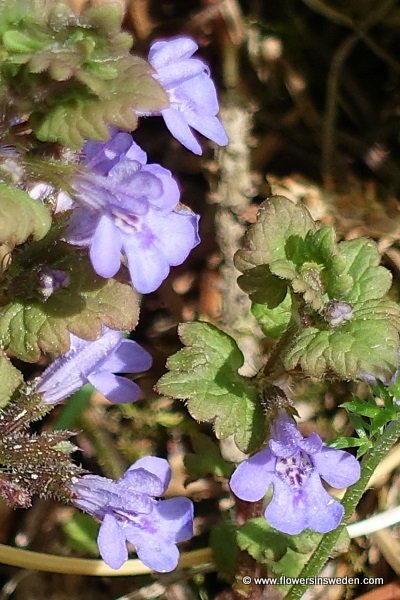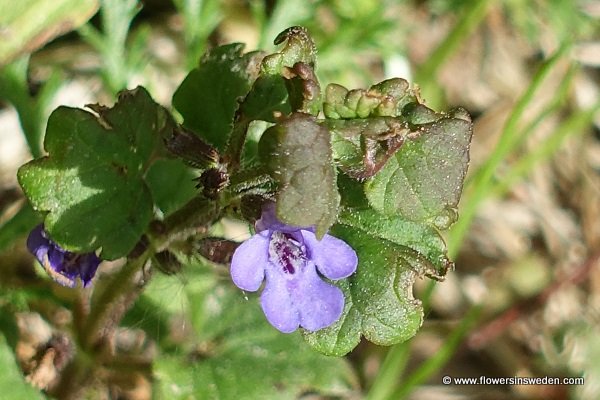|
|
| Life form: |
| Creeping perennial herb |
| Stems: |
| 5 cm - 50 cm tall, square stems which root at the nodes |
| Leaves: |
| Round to reniform (kidney or fan shaped), crenate (with round toothed edges) opposed leaves, 2-3 cm diameter |
| Flowers: |
| Flowers bilaterally symmetrical, funnel shaped, blue or bluish-violet to lavender, growing in opposed clusters of 2 or 3 flowers in the leaf axils on the upper part of the stem or near the tip |
| Flowering Period: |
| April-June |
| Fruits: |
| Each flower wil be replaced by 4 smooth, ovoid brown nutlets; each nutlet is ovoid, with 2 flat sides and an outer side that is rounded. |
| Habitat: |
| Meadows, woodland margins, preferably slightly moist waste ground |
| Distribution: |
| Common in southern and central Sweden |

Derivation of the botanical name:
Glechoma, Greek glechon, glachon, a kind of mint, possibly Mentha pulegium, Latin glechon, onis for penny-royal.
hederacea, pertaining to ivy.
- The standard author abbreviation L. is used to indicate Carl Linnaeus (1707 – 1778), a Swedish botanist, physician, and zoologist, the father of modern taxonomy.

|



